Archive for the ‘General interest’ Category.
16th February 2013, 07:10 pm
Participated in the excellent Moravian College Student Mathematics Conference February 16, 2013. Many thanks to my hosts Nate Shank and Kevin Hartshorn, Dean Gordon Weil, student presider Eric Sullivan, and all workers and speakers.
29th January 2013, 09:53 am
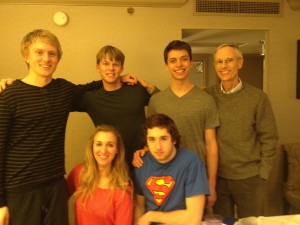
Every January Williams students take one special course. Faculty, every other year, teach whatever they like. In 2013 for the second time I taught “Tournament Bridge.” The five first- and second-year students and I studied, practiced, and played in tournaments in Pittsfield, Newton, Rye, and Schenectady.
Paul Freidrich, Neeko Gardner, Ben Hoyle, Professor Frank Morgan, Caroline Atwood, and Llewellyn Smith at the Rye Regional
Continue reading ‘Tournament Bridge January 2013’ »
3rd September 2012, 07:28 am
“Analysis and Geometry in Metric Spaces” is one of a number of new open access journals to be funded by author fees, such as the Gowers-Tao Forum of Mathematics. The idea is that long-term it will be much cheaper for institutions to pay author fees than subscription fees, but the transition will be difficult, since while the major journals are on the old model, institutions cannot drop their subscriptions and may not pay author fees, and authors would rather publish for free in established journals.
“Analysis and Geometry in Metric Spaces” provides a journal for an important and rapidly growing modern area of mathematics and to its credit it does it on this new open access model of the future. I wish my good friend and the editor Manuel Ritoré of the extraordinary Department of Geometry and Topology at the University of Granada every success.
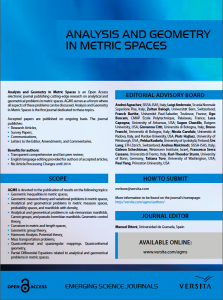
22nd July 2012, 10:26 am
This morning I found the Sara Tenney loop to complete my favorite RRR Brooks Trail. The trail heads right off Bee Hill Road, just past a bridge, about a block above where it forks right off Routes 2/7 South out of Williamstown.
.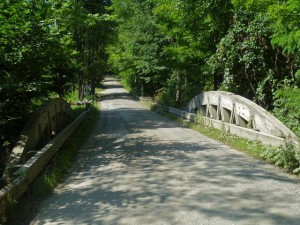
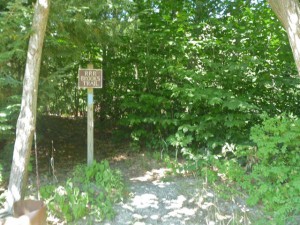
Continue reading ‘My Favorite RRR Brooks Trail’ »
17th July 2012, 08:34 am
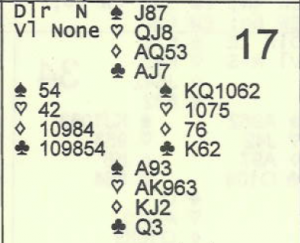 I just spent four enjoyable days at the ACBL Bridge Nationals in Philadelphia, playing with five pick-up partners from the partnership desk and one old friend. The most memorable hand for me involved a squeeze play for a small slam in Notrump. I was North. When the dummy came down, it looked like the contract depended on the Club finesse, but East was looking suspicious. I asked myself if there was any way to make it if East had the Club King, and I realized he could be squeezed. To keep that option open and rectify the count, I let the Spade King take the trick. He puzzled over the continuation, convincing me he had the Club King. When he finally led a red card, I ran the nine red winners, ending with Spade A and Clubs Q 3 in dummy and Spades J 8 and Club A in hand. On the ninth trick, East, holding Spades Q 10 and Clubs K 6 agonized over the discard as hoped. I turned to him and mumbled quietly, it doesn’t matter. When he finally discarded the Club 6, I came to the Club A in hand and watched him play his Club King under my Ace, leaving the dummy’s Spade A and Club Q good for the last two tricks. Of course if he had discarded the Spade 10, I would have played the Spade Ace dropping his Q, leaving the Club A and Spade J in my hand good. What he should have done was discard the Club 6 2 early on, leaving some doubt when he could have discarded the Spade 10 at the end, keeping the Spade 6 with his Q.
I just spent four enjoyable days at the ACBL Bridge Nationals in Philadelphia, playing with five pick-up partners from the partnership desk and one old friend. The most memorable hand for me involved a squeeze play for a small slam in Notrump. I was North. When the dummy came down, it looked like the contract depended on the Club finesse, but East was looking suspicious. I asked myself if there was any way to make it if East had the Club King, and I realized he could be squeezed. To keep that option open and rectify the count, I let the Spade King take the trick. He puzzled over the continuation, convincing me he had the Club King. When he finally led a red card, I ran the nine red winners, ending with Spade A and Clubs Q 3 in dummy and Spades J 8 and Club A in hand. On the ninth trick, East, holding Spades Q 10 and Clubs K 6 agonized over the discard as hoped. I turned to him and mumbled quietly, it doesn’t matter. When he finally discarded the Club 6, I came to the Club A in hand and watched him play his Club King under my Ace, leaving the dummy’s Spade A and Club Q good for the last two tricks. Of course if he had discarded the Spade 10, I would have played the Spade Ace dropping his Q, leaving the Club A and Spade J in my hand good. What he should have done was discard the Club 6 2 early on, leaving some doubt when he could have discarded the Spade 10 at the end, keeping the Spade 6 with his Q.
It could have been easier. At other tables East bid, pegging him for all the missing cards. And of course if he doesn’t lead the Spade, it is easy to set up a Club trick even if the finesse loses. At one table East discarded so poorly (all his Clubs) that North made 7 without any squeeze.
12th June 2012, 12:30 pm
Seeing my old friend A. R. Gurney, the illustrious playright, at his 60th Reunion here at Williams College and addressing the 25th Reunion dinner at MIT, all last Saturday, brought back many happy memories.
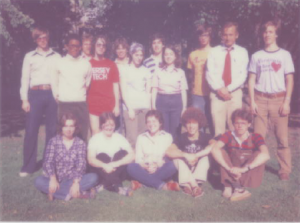 Gurney and I taught a freshman seminar at MIT on “Math and Literature,” in which he had to do all the homework I assigned on the Euler characteristic and I had to do his assignments in literature, including a parody of Dante’s Inferno which I call Dante’s MIT.
Gurney and I taught a freshman seminar at MIT on “Math and Literature,” in which he had to do all the homework I assigned on the Euler characteristic and I had to do his assignments in literature, including a parody of Dante’s Inferno which I call Dante’s MIT.
At the MIT 25th Reunion Dinner, in the dazzling new Media Lab with its breathtaking view of the Boston skyline and the Charles River, I began with an old segment from the nationally syndicated PM Magazine from May 30, 1984, referred to in some old exams. My old students followed my talk on “Soap Bubbles and Mathematics” with their old enthusiasm and acuity. I’m very proud of them and all that they have accomplished.
31st May 2012, 04:01 pm
Undergraduate STEM Education Report by the President’s Council of Advisors on Science and Technology (PCAST)

On February 7, PCAST released Engage to Excel: Producing One Million Additional College Graduates with Degrees in Science, Technology, Engineering, and Mathematics. “This report provides a strategy for improving STEM education during the first two years of college that we believe is responsive to both the challenges and the opportunities that this crucial stage in the STEM education pathway presents. Economics projections point to a need for approximately 1 million more STEM professionals than the US will produce at the current rate over the next decade if the country is to retain its historical preeminence in science and technology. To meet this goal, the United States will need to increase the number of students who receive undergraduate STEM degrees by about 34% annually …”
Response by the Mathematical Association of America
Note added 19 June 2012. In his Launchings, David Bressoud concluded that, “In short, the problem is not with attracting students to STEM fields. The issue will be to retain them.”
29th May 2012, 07:39 am
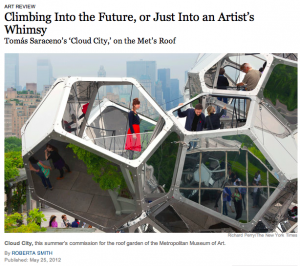
The Weaire-Phelan soap bubble foam counterexample to Kelvin’s Conjecture is the latest art exhibit on the roof of the Metropolitan Museum of Art in New York City (photo from New York Times article). It is conjectured to divide space into unit-volume chambers with the least amount of material. It was also used for the Beijing Olympic Water Cube. For more on the Kelvin Conjecture, see my blog at the Huffington Post.
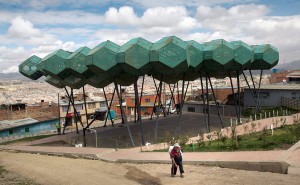 Note added 8 July 2012. Rob Kusner pointed out this canopy, designed by Giancarlo Mazzanti, in Bogotá, Columbia, reported by Michael Kimmelman in The New York Times.
Note added 8 July 2012. Rob Kusner pointed out this canopy, designed by Giancarlo Mazzanti, in Bogotá, Columbia, reported by Michael Kimmelman in The New York Times.
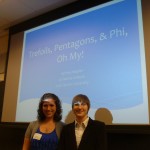
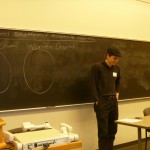
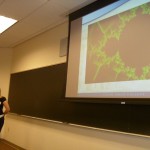
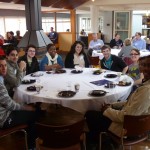

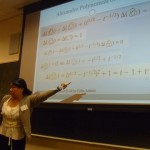
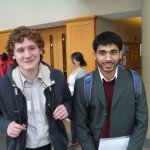
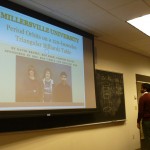
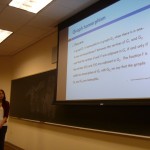
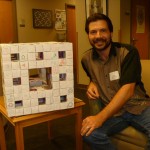






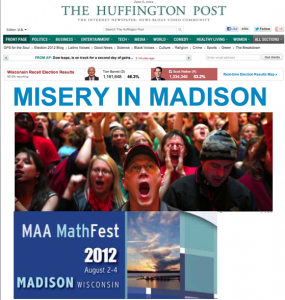
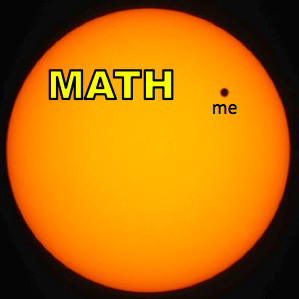


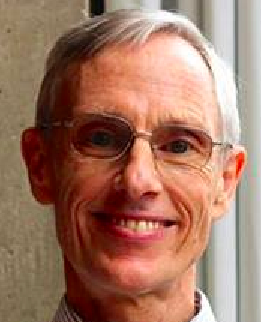 Welcome to my blog. I also have a blog at the
Welcome to my blog. I also have a blog at the